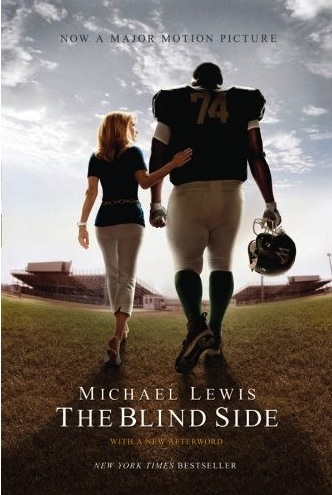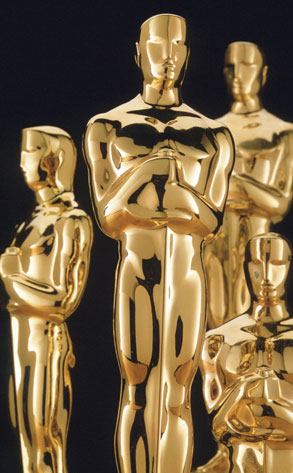'The Blind Side' vs. niche Hollywood
 This may or may not be the last time that I write about "The Blind Side" movie. It's hard to tell. I mean, who knows? Sandra Bullock may win the Oscar and accept Jesus as her personal savior on live television while waving that little golden man and then there would be another round of mainstream media coverage. Right? Stranger things have happened, with this flick.
This may or may not be the last time that I write about "The Blind Side" movie. It's hard to tell. I mean, who knows? Sandra Bullock may win the Oscar and accept Jesus as her personal savior on live television while waving that little golden man and then there would be another round of mainstream media coverage. Right? Stranger things have happened, with this flick.
As it is, "The Blind Side" is one of the symbolic best-picture nods that the Academy of Motion Picture Arts and Sciences has tossed to the heartland, like crusts of artistic bread, in an attempt to woo a few more eyeballs to the television screen at showtime.
Here's the way the Los Angeles Times put it:
They are precisely the kinds of movies hardly ever nominated for the best-picture Oscar -- a tear-jerker sports film, a space-alien thriller and an animated feature with a flying house and talking dogs -- but the populist pleasures "The Blind Side," "District 9" and "Up" all made the final cut for the top Academy Award.
Concerned that a steady stream of challenging, often little-seen art movies were dominating the Oscars and deflating TV ratings, the Academy of Motion Picture Arts and Sciences doubled this year's best-picture race to 10 contestants, and the results ... were exactly as intended: the inclusion of movies that have sold a boatload of tickets.
That's candid.
The reason that I bring this up is that I have, for quite some time now, been intending to praise a recent Times piece about the story behind the story of the making of "The Blind Side," a newsy feature that just nailed the importance of the movie, in terms of how it fit into the marketplace of postmodern Hollywood.
You see, nobody ever thought that this was going to be a hit "Christian movie," or even a tiny little Fox-Faith-esque movie for church ladies. The story behind this movie is much stranger than that and reporter Rachel Abramowitz really dug down into the details of the hurdles that writer-director John Lee Hancock had to clear to get this true-life story to the screen.
You just have to love the lede:
After Julia Roberts turned down the starring role, executives at 20th Century Fox met with writer-director John Lee Hancock with a plan for "fixing" the script for his proposed movie "The Blind Side": Why not change the leading part from a pistol-packing Southern supermom to a man and redraft the film as a father-son story?
It didn't matter that the film was based on the life of Leigh Anne Tuohy, a white Memphis interior decorator who along with her family adopted a 350-pound, homeless African American teenager, Michael Oher, and helped him become an academic success and football phenomenon who today starts for the NFL's Baltimore Ravens. If Roberts didn't want to do the movie, they would only make it with a male lead.
The studio powers that be deny that, of course.
But this episode spotlights the movie's basic problem. No, it wasn't the Christian content that was the problem, although that had to scare a few people in corner offices at major studios.
 No, the problem was that "The Blind Side" appealed to too many different kinds of people. In a niche world, it's appeal was simply too, too, too -- broad. Well, $240 million later, that niche theory is being questioned, perhaps even by studio executives.
No, the problem was that "The Blind Side" appealed to too many different kinds of people. In a niche world, it's appeal was simply too, too, too -- broad. Well, $240 million later, that niche theory is being questioned, perhaps even by studio executives.
"The Blind Side" was "a feathered fish" that didn't fit their marketing pigeonholes. "It's not really a sports movie, although it's got sports in it. It's also not a chick flick," though it was written for a female star. "My take on it was ... there was something for everybody," Hancock said. "That's a suspicious thing for people to hear. They don't trust that." ...
The perceived box office weaknesses of "The Blind Side" turned out to be its strengths. The film is attracting a diverse audience, people who might live together but rarely attend the same movies: football fans, older women, infrequent filmgoers and that huge swath of the American public that attends church every Sunday.
So there. And don't forget the fact that the movie connected with African-American audiences, especially families and, yes, the people who pack pews in predominately black megachurches.
Family ties -- literally -- didn't hurt either. One of the major funders of the film has a son who dates Collins Tuohy, as in the daughter of the steel-magnolia main character and, thus, the sister of the adopted gridiron hero Oher. Blessed be the ties that bind, as people say in the Bible Belt.
There were some optimistic people who thought that this "Good Samaritan" story might hit $75 million and raise some eyebrows. Yes, it did help that Bullock signed on for $5 million upfront and a higher than normal percentage of the profits, including DVD sales. Smart move, lady.
Read this story, if you care about the future of mainstream movies in this era of digital niches. The Los Angeles Times started writing about this little movie really early -- before it was a giant in the red-zip-code marketplace. This audience was hiding right out there in the wide open.
You know, newspaper editors might want to read this story, too.